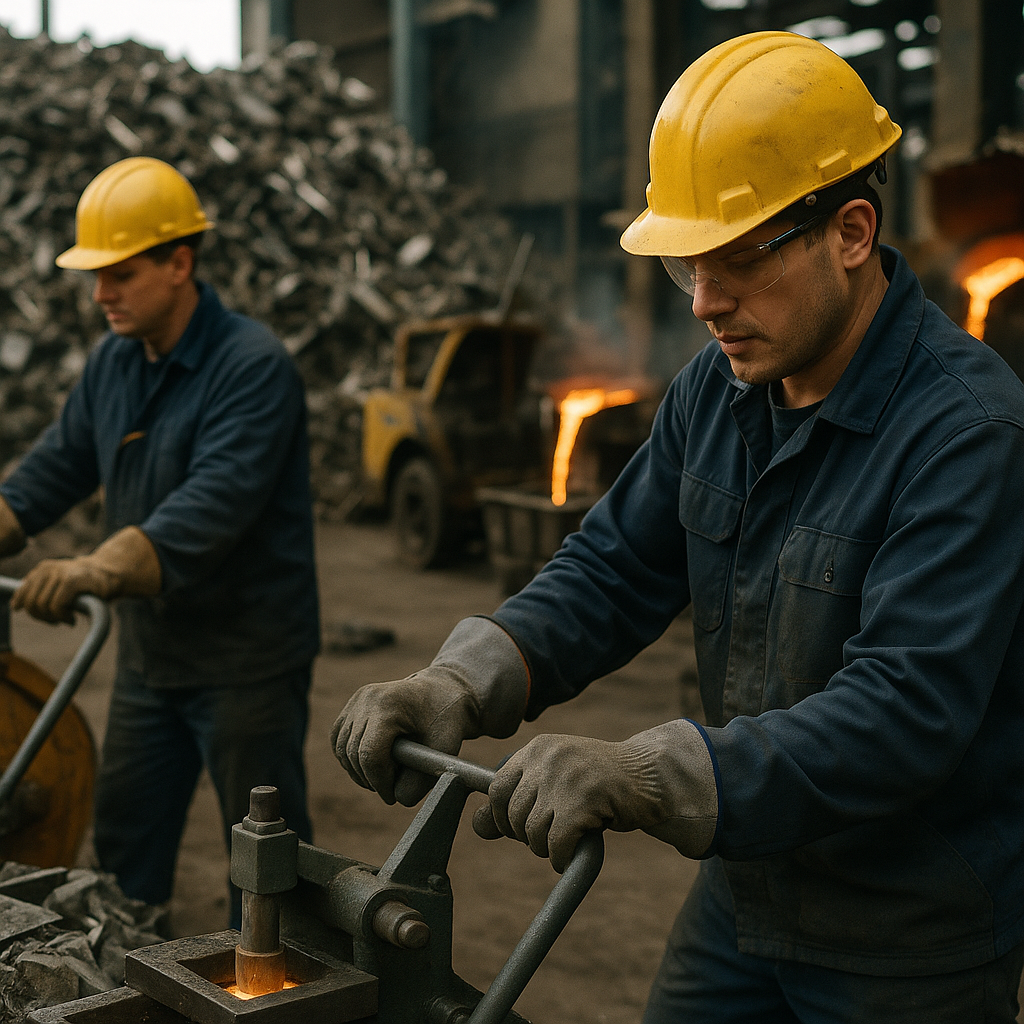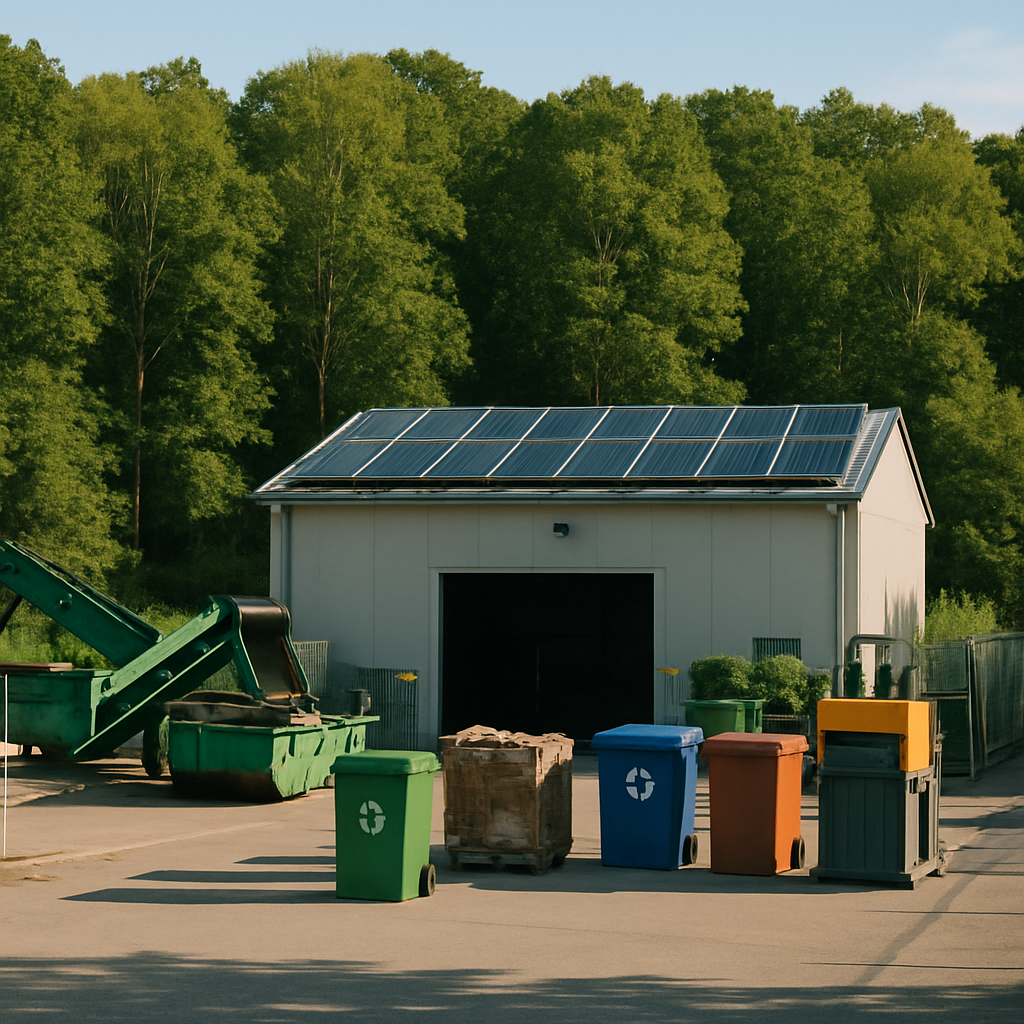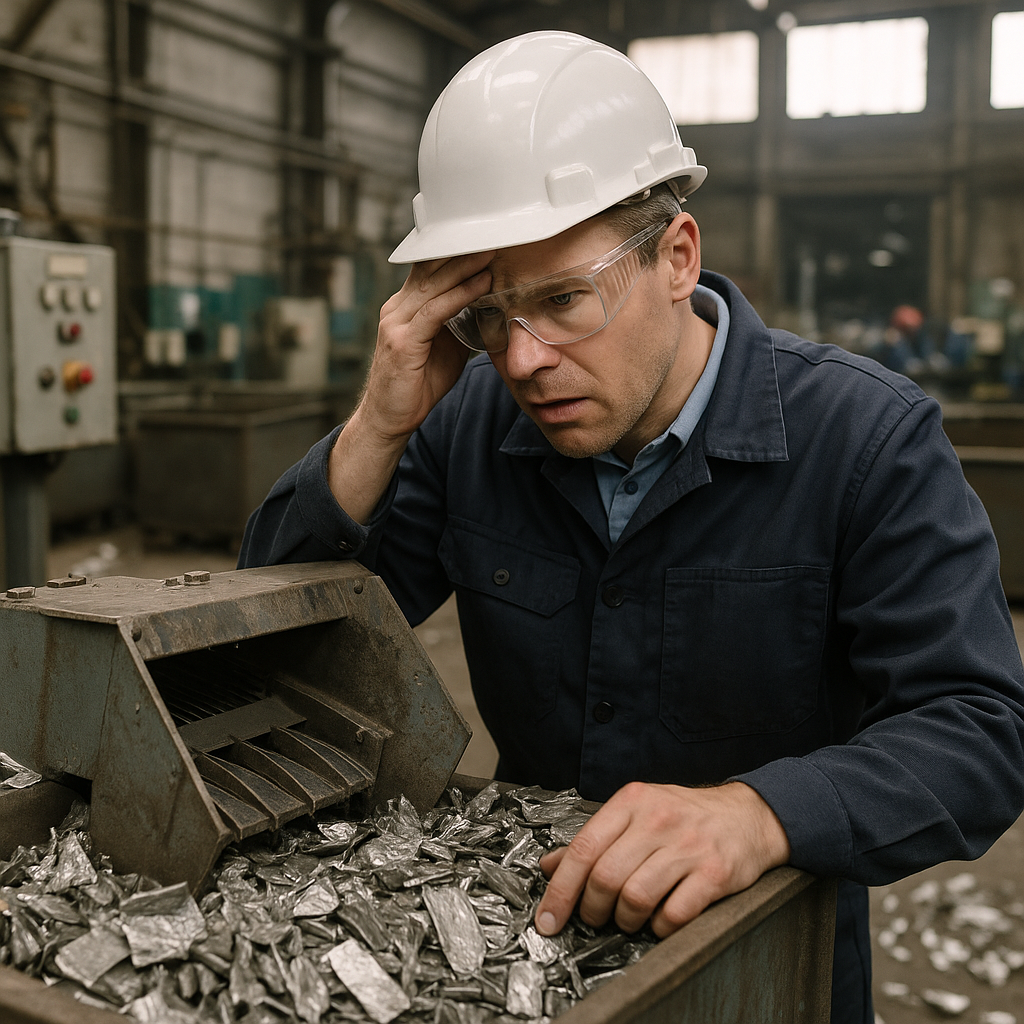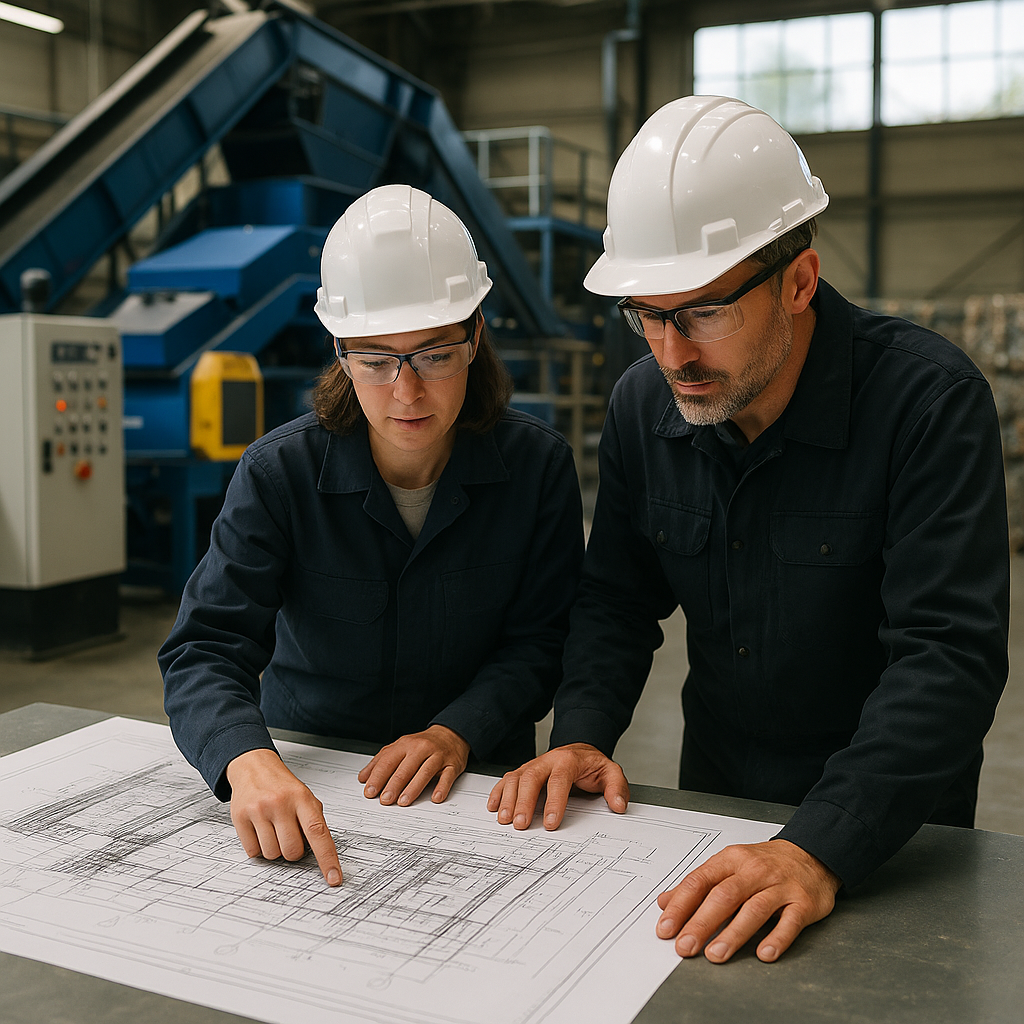5901 Botham Jean Blvd, Dallas, TX 75215
Secondary Metal Production: Process, Benefits, & Challenges
October 27, 2025Every aluminum can, steel beam, or copper wire has potential for a second life. The secondary metal production process transforms yesterday’s scrap metal into tomorrow’s valuable products. Instead of relying on raw ore extracted from the earth, this method uses discarded metal, offering an alternative to traditional metal manufacturing.
Secondary metal production signifies a crucial shift in resource management. By recycling metals like aluminum, steel, and copper, we minimize mining impacts while conserving energy. This process currently contributes approximately 20% of global output for these widely recycled metals.
The environmental benefits are substantial. Recycling aluminum, for example, requires only 5% of the energy needed for primary production. This efficiency leads to lower greenhouse gas emissions and significantly reduced waste across the metal manufacturing sector.
What Are the Main Steps in Secondary Metal Production?

Secondary metal production transforms discarded metal scrap into valuable materials ready for reuse. This environmentally beneficial process uses substantially less energy than primary production while keeping metals out of landfills. The recycling journey follows six critical steps that together form the foundation of metal resource recovery.
Collection and Sorting of Scrap Metal
The journey begins with collecting discarded metal items from sources such as industrial facilities, construction sites, and consumer recycling programs. Collection networks are organized businesses that gather materials from widespread locations.
Once collected, the scrap undergoes preliminary sorting by metal type. This initial segregation is crucial as different metals require distinct processing methods. Scrap segregated by chemical composition maintains the highest value, while mixed alloy scrap generally commands lower prices.
Shredding and Size Reduction
After sorting, large metal pieces are broken down into manageable sizes. Powerful industrial shredders tear and crush bulky items into smaller fragments. This size reduction serves two important purposes: creating uniform pieces that are easier to process and increasing the surface area of the metal for more efficient melting.
Modern shredding equipment can process several tons of metal per hour, turning everything from discarded appliances to car bodies into palm-sized fragments ready for the next step.
Metal Separation
The shredded material typically contains various metals and non-metallic components that must be separated. This phase employs several technologies to achieve precise sorting:
Magnetic separators pull ferrous metals (containing iron) from the mixture. Eddy current separators use electromagnetic fields to repel non-ferrous metals like aluminum, creating a sorting effect. Advanced systems may also use Laser Induced Breakdown Spectroscopy or color sorting to identify specific alloys with remarkable precision.
Melting in Furnaces
The separated metal scrap is loaded into specialized furnaces where it transforms from solid to liquid state. Electric arc furnaces are commonly used, creating intense heat that reaches 1300-1400 degrees Fahrenheit for aluminum and even higher temperatures for other metals.
The furnace choice depends on the type of metal being processed and the desired output. Rotary hearth furnaces with molten flux layers have traditionally been workhorses in this industry, though newer technologies are emerging for specific applications.
Refining and Alloying
The molten metal undergoes refining to remove remaining impurities and achieve the desired composition. This may involve stirring, ladle injections, or other techniques to improve metal quality. Secondary steelmaking refines the steel’s chemistry to create specific grades with particular properties.
Additional metals and compounds are often added during this stage to achieve the right alloy “recipe” for the finished product. This process allows manufacturers to create metals with precise characteristics suited for specific applications.
Casting into Final Form
Finally, the refined molten metal is cast into forms ready for further manufacturing. These may include ingots, billets, slabs, or other shapes depending on the metal’s intended use. During casting, the molten metal is poured into molds where it cools and solidifies into its final form.
Modern casting operations may use continuous casting processes where metal flows through water-cooled molds to form long strands that are cut to desired lengths, improving efficiency over traditional methods.
Through these six interconnected steps, secondary metal production converts what was once considered waste into valuable manufacturing inputs, creating a more sustainable approach to metal resource management.
What Are the Environmental Benefits of Secondary Production?

Secondary metal production offers significant environmental benefits compared to primary methods. By processing scrap metal instead of extracting new ore, energy consumption is dramatically reduced—typically by 60-95%, depending on the metal type. For aluminum, this reduction can be up to 95%, while steel production using electric arc furnaces uses approximately 75% less energy than traditional blast furnaces.
The CO2 reduction advantages are equally noteworthy. Recycling metals rather than producing them from raw materials substantially decreases greenhouse gas emissions. Secondary steel production can reduce emissions by 10-38%, while secondary aluminum production cuts emissions by 3.5-20%. These reductions are crucial for addressing climate change, as metal production is a significant contributor to global carbon emissions.
Resource conservation is another major benefit. Recycling one ton of steel preserves 1.4 tons of iron ore, 0.8 tons of coal, and 0.3 tons of limestone. For aluminum, recycling a single ton saves about 8 tons of bauxite, 14,000 kWh of energy, and 7.6 tons of CO2 emissions. This conservation extends beyond raw materials, leading to significant water savings and reduced pollution from mining operations.
Secondary metal production also aids in waste management by diverting valuable metals from landfills. This supports a circular economy approach, where materials retain their utility and value through multiple lifecycles, moving away from the traditional linear take-make-dispose model. In a circular economy, products are designed for durability, reuse, and eventual recycling, creating a closed-loop system that minimizes waste and environmental impact.
Water conservation is another critical environmental benefit. Primary metal production requires substantial water volumes for processing ore and cooling equipment. Secondary production drastically reduces this water demand while also preventing water pollution associated with mining operations, including acid mine drainage and heavy metal contamination.
What Challenges Face the Secondary Metal Industry?

The secondary metal industry plays a crucial role in global sustainability efforts. Although it offers significant environmental and economic benefits, several challenges impact its effectiveness and growth potential.
Limited Scrap Availability
A major hurdle for the industry is the limited availability of scrap metal. Unlike primary raw materials, which can be mined as needed, recycled materials depend on end-of-life product flows.
The delay between production and recycling creates a fundamental supply constraint. For instance, steel products have an average lifespan of 40 years, with some infrastructure lasting up to 100 years, leading to a delay between initial production and recycling availability.
Global steel demand is growing faster than the supply of available scrap. Current estimates suggest that global end-of-life ferrous scrap availability will reach approximately 600 million tons by 2030 and 900 million tons by 2050. Despite substantial growth, this is still insufficient to meet total demand.
Material Contamination and Quality Issues
Contamination significantly impacts the quality and usability of recycled metals. Mixed or improperly sorted materials can diminish product quality and increase processing costs.
Copper contamination poses a particular challenge in steel recycling. Unlike most impurities that can be removed during processing, copper cannot be separated once melted with steel. Excessive copper content leads to reduced ductility and surface defects in finished products.
The increasing electrification of society exacerbates this issue by raising the proportion of copper in recovered scrap. As scrap availability increases and primary production decreases, less virgin metal is available for dilution to manage contaminant levels.
Technological Limitations
Modern products often combine multiple materials in complex assemblies, making metal recovery challenging. Current separation technology struggles to efficiently process these intricate combinations.
Advanced sorting systems, such as those powered by artificial intelligence and robotics, help address this challenge by identifying and isolating different metals with improved accuracy, reducing contamination and improving recycling rates. However, implementation costs remain high for many recyclers.
The industry needs continued innovation in shredding, sorting, and melting technologies to manage increasingly complex scrap streams effectively. Without these advances, valuable metals may remain trapped in difficult-to-process composites.
Market Competition and Price Volatility
The secondary metal industry faces intense competition from primary metal producers. In many regions, primary production receives government subsidies that create an uneven playing field for recyclers.
Price volatility presents another significant challenge. Global economic trends, trade policies, and supply-demand imbalances can dramatically impact metal prices. This volatility complicates business planning and threatens profitability during market downturns.
For example, steel tariffs introduced in recent years had mixed effects on recyclers. While initially boosting domestic demand and prices, they also disrupted global trade patterns and increased market unpredictability.
Regulatory Barriers and Compliance Costs
The secondary metal industry operates under strict and often complex regulations to ensure environmental protection and worker safety. However, these rules can impose significant compliance burdens.
Cross-border regulations add another layer of complexity. The Basel Convention and similar agreements govern the international movement of certain scrap types, limiting trade options for recyclers. Varied standards across regions further complicate regulatory compliance.
While necessary for environmental protection, these regulations can increase operational costs and administrative burdens. Smaller recyclers may struggle to meet all requirements, potentially leading to industry consolidation.
How Can Secondary Metal Production Be Improved?

The future of secondary metal production relies on technological innovation and policy reform. Advances in sorting technologies like AI-powered systems and XRF analysis can significantly increase recycling efficiency. These technologies identify and separate metals with remarkable accuracy, reducing contamination and improving the quality of recycled materials.
Supportive policies are also crucial. Reforming government support measures that currently favor primary production would create a more balanced market. Landfill bans for metal items and tax incentives for recyclers can further enhance secondary metal production. These policy changes align with the growing circular economy objectives in many countries.
For manufacturers and product designers, considering end-of-life recycling during the design phase is essential. Using easily separable materials, avoiding difficult-to-recycle composites, and implementing product take-back programs help achieve higher recycling rates. This approach marks a fundamental shift toward more sustainable product lifecycles.
Need help with your metal recycling program? Contact Okon Recycling at 214-717-4083. Our team can assist you in developing and implementing effective metal recycling solutions that benefit both your business and the environment.
